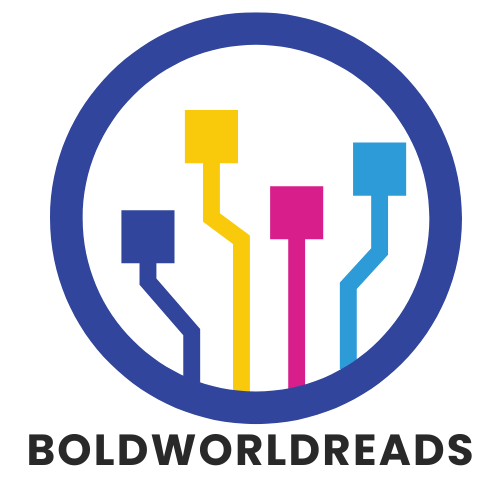In a world bustling with distractions, setting goals can feel like trying to catch a greased pig at a county fair. But fear not! Goal setting tools are here to turn that slippery endeavor into a smooth ride. Whether you’re aiming to conquer your career, improve your fitness, or finally tackle that ever-growing to-do list, the right tools can transform dreams into achievable milestones.
Table of Contents
ToggleUnderstanding Goal Setting Tools
Goal-setting tools facilitate the process of defining and tracking aspirations. These instruments enhance clarity and focus, addressing the challenges of a distraction-filled environment.
What Are Goal Setting Tools?
Goal-setting tools encompass various resources, including apps, planners, and frameworks. These tools assist users in articulating objectives, breaking them into actionable steps, and monitoring progress. Software solutions like Trello or Asana allow for easy task management, while frameworks like SMART (Specific, Measurable, Achievable, Relevant, Time-bound) provide structured approaches to goal development. Utilizing these tools simplifies the navigation of individual ambitions.
Importance of Goal Setting Tools
Goal-setting tools significantly enhance productivity and motivation. By offering a clear roadmap, these resources transform vague ideas into concrete actions. Users can track milestones, celebrate achievements, and adjust plans as needed, ensuring continuous progress. Research indicates that individuals who employ goal-setting tools increase their chances of reaching objectives by up to 50 percent. Clarity and accountability stem from these tools, reinforcing commitment and empowering individuals to realize their aspirations effectively.
Types of Goal Setting Tools
Goal-setting tools come in various forms, each catering to different preferences and needs. Two primary categories include digital tools and paper-based tools.
Digital Tools
Digital tools streamline the goal-setting process through technology. Apps such as Todoist and Trello enable users to create, organize, and track goals efficiently. These platforms offer features like reminders, progress tracking, and collaboration options. By allowing integration with calendars and other applications, digital tools enhance accessibility and convenience. They provide instant feedback, making it easier to assess progress. Users can visually represent their achievements through charts and graphs, significantly boosting motivation. Research indicates that individuals who leverage these digital solutions enhance their likelihood of reaching goals by 50 percent.
Paper-Based Tools
Paper-based tools offer a tactile approach to goal setting. Planners, journals, and vision boards allow for creative expression while outlining aspirations. Writing goals by hand aids in retention and clarity, making them feel more tangible. Bullet journals facilitate customizable layouts that adapt to individual preferences. Mind maps serve as visual organizers, helping users connect related ideas effectively. Many prefer these tools for their simplicity and lack of digital distractions. Studies show that writing down goals can significantly increase commitment and accountability, reinforcing the importance of this traditional method.
How to Choose the Right Goal Setting Tool
Selecting the right goal-setting tool requires careful consideration of both personal needs and the features available. An effective choice enhances motivation and productivity, ensuring individuals stay on track.
Evaluating Personal Needs
Identifying personal aspirations significantly influences the choice of tool. One must assess the desired outcomes and the preferred method of organization. Goal types play a crucial role; for instance, some may prioritize career objectives while others target personal growth. Each individual’s preference for digital or paper-based formats can impact effectiveness. Consider also the level of detail needed; some may thrive with simple lists, while others benefit from more complex structures. Understanding personal habits aids in finding a tool that resonates with individual workflows, ensuring increased commitment.
Features to Consider
When selecting a goal-setting tool, specific features can enhance functionality. Look for tracking capabilities that visualize progress over time. Collaboration options may prove beneficial for those who prefer shared accountability with friends or colleagues. Customizability can cater to unique workflows, while reminders help keep goals top of mind. Additionally, integration with existing apps or platforms streamlines the process. Accessibility remains vital, as seamless usability on various devices ensures that users remain engaged. The combination of these features can boost overall effectiveness, making the selected tool a valuable resource for achieving goals.
Tips for Effective Goal Setting
Effective goal setting combines strategy and clarity. Using structured methods simplifies the process significantly.
Setting SMART Goals
SMART goals help individuals create specific and measurable objectives. Each component focuses efforts on achievable targets. Goals should be specific to avoid ambiguity. They need measurable criteria to track progress, ensuring accountability. Achievability focuses on realistic expectations, considering available resources. Relevant goals align with broader aspirations, enhancing motivation. Lastly, time-bound aspects create deadlines, prompting timely action. Research confirms that individuals using this framework increase likelihood of success by 50 percent. This structured approach transforms vague aspirations into actionable plans.
Tracking Progress
Regularly tracking progress is essential for sustained motivation. Setting milestones enables individuals to celebrate small achievements along the way. Utilizing tools for updates makes monitoring simple and efficient. Progress tracking provides visual feedback, reinforcing commitment to goals. Feedback and reflection guide necessary adjustments, ensuring continued alignment with aspirations. Timeframes for reviews should be clear, prompting consistent evaluations of achievements and challenges. Studies indicate that consistent tracking leads to a significant increase in goal attainment success. Prioritizing monitoring in any goal-setting strategy guarantees individuals remain focused and empowered.
Utilizing goal-setting tools can significantly enhance the journey toward achieving personal and professional aspirations. Whether opting for digital apps or traditional paper-based planners, the right tool fosters clarity and accountability. By breaking down goals into manageable steps and tracking progress, individuals can maintain focus and motivation.
The choice of a tool should align with personal preferences and desired outcomes. Regular monitoring and celebrating milestones further empower individuals to adjust their strategies as needed. Ultimately, embracing effective goal-setting tools transforms ambitions into reality, making the path to success more attainable and rewarding.



